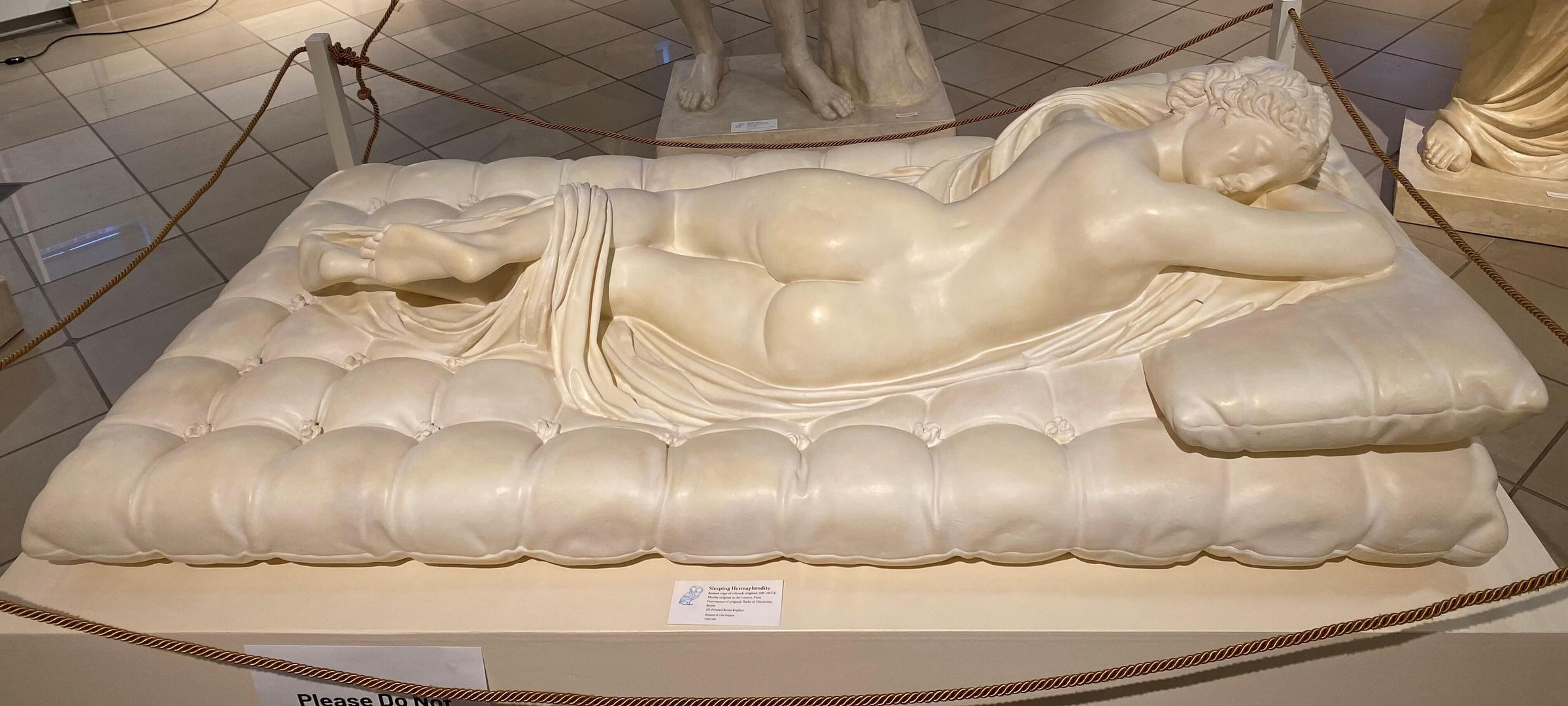Sleeping Hermaphrodite
Name/Title
Sleeping HermaphroditeEntry/Object ID
21R01240Description
Nude figure lying on a tufted mattress and a pillow. The figure lies a prone position with head resting on their right forearm. There is drapery wrapped about the body from the left forearm to the feet and legs. The right index finger and tip of the thumb are broken off, and all the fingers on the left hand are broken off. 3-D printed resin replica of a marble original.Type of Sculpture
StatueArtwork Details
Medium
MarbleSubject
Sleeping HermaphroditeSubject Person
HermaphroditeContext
The story of Hermaphrodite is told in Ovid's Metamorphoses, and describes the love of the naiad, Salmacis, for the youth, Hermaphrodite, whom she encountered one day when he came to bathe in the lake she inhabited. Constantly rejected by the object of her passion, Salmacis dragged Hermaphrodite to the bottom of the lake, begging the gods never to separate them. Her wish was granted, and the two were combined into one person, both male and female. Images of Hermaphrodite are documented starting at least in the fourth-century BCE and were a favourite topic in artists' workshops during the Hellenistic era. They are known in two main types: standing, either Anasyromenos (with robe lifted to reveal male sex organs), or reclining nude. Hellenistic bronze sculptures of sleeping Hermaphrodite, sometimes attributed to a sculptor named Polycles, have not survived, but the figure is known from numerous marble copies dated to the Roman era. The known copies include those in major collections at the National Museum in the Palazzo Massimo, Borghese Gallery, and Vatican Museums in Rome, in Florence's Uffizi Gallery, and in the Hermitage Museum at St. Petersburg. One of the most famous is this, a copy of the Sleeping Hermaphrodite from the Louvre. Each copy depicts Hermaphrodite seemingly in the act of turning in sleep, slightly entangled in a sheet. The Louvre Hermaphrodite was unearthed in 1618 during the construction of the Church of Santa Maria del Vittoria near the Baths of Diocletian in Rome and dates to the second-century CE. It was gifted to Cardinal Scipione Borghese, and became part of the Borghese collection. Portions of the statue were restored in 1620 by David Larique. The mattress and pillow upon which Hermaphrodite sleeps is an addition, created in 1620 by renowned sculptor Gian Lorenzo Bernini. The statue remained in the Borghese collection until the discovery in 1781 of another second-century copy, at which time it was sold to the Louvre in 1807. The original is carved from Carrara marble.Collection
Roman EmpireMade/Created
Artist
UnknownDate made
100 CE - 150 CETime Period
Roman ImperialPlace
City
RomeCountry
ItalyEthnography
Cultural Region
City
RomeCountry
ItalyCulture/Tribe
Roman

